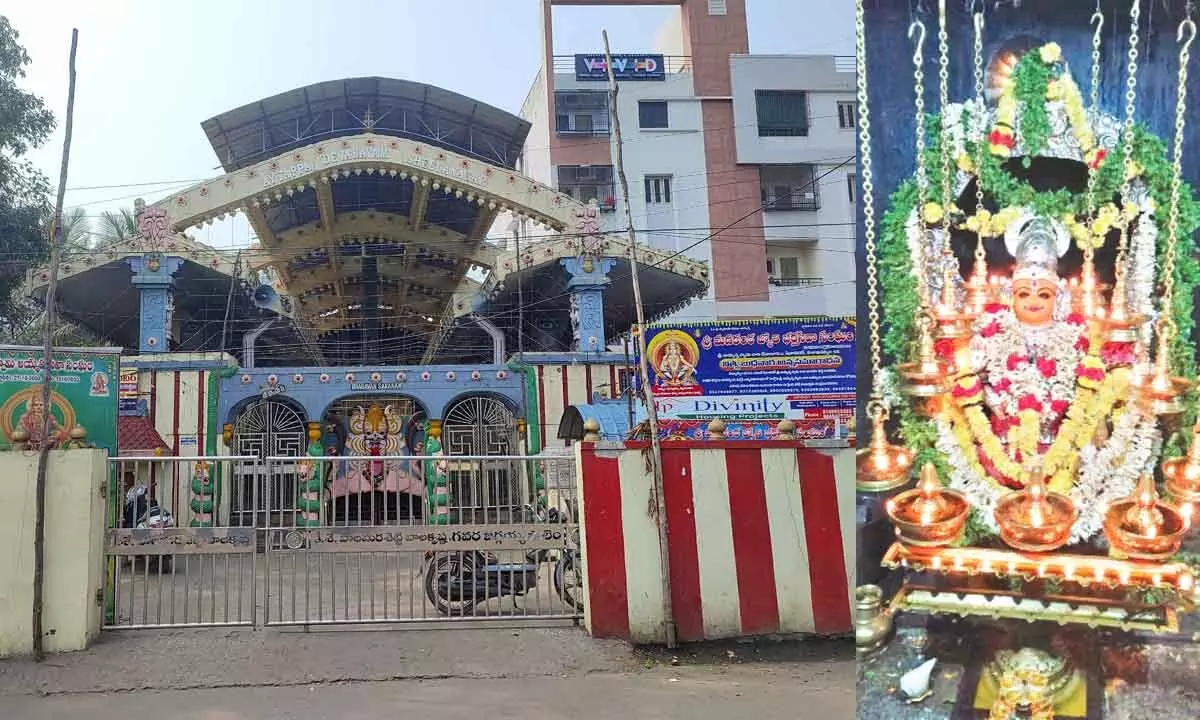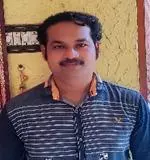Ayyappa Swamy temple that follows Sabarimala rituals

A view of Ayyappa Swamy Temple located at Sheelanagar in Visakhapatnam; Lord Ayyappa deity decked up in 'chandana alankarana
The rituals carried out at Ayyappa Swamy temple in Visakhapatnam are similar to the ones followed at Sabarimala temple
The rituals carried out at Ayyappa Swamy temple in Visakhapatnam are similar to the ones followed at Sabarimala temple.
A team of priests from Kerala perform puja rituals with traditional fervour at the temple on a daily basis.
Established in 1984, the shrine is the most sought-after one in the city among Ayyappa devotees. Located adjacent to NH-16 at Sheelanagar in Visakhapatnam, the temple facilitates all the rituals followed by those who are on Ayyappa deeksha.
A group of BHPV employees formed a society under the banner Ayyappa Devalaya Samithi in 1984. Pooling funds through donations arriving from different quarters, the society members came forward to construct the temple in the area.
Back then, S. Sambasiva Rao donated 350 square yards of land for the construction of the shrine. While the foundation stone was laid in 1985, the main deity was consecrated in June, 1989.
Marking the occasion, 'pavithrotsavalu' is held here from June 15 to 20 every year. The four-ft tall Ayyappa deity was donated by Nalinikanth.
The shrine built in a three-storeyed structure has an abode for different gods on each floor. The abode of Ananta Padmanabha Swamy is at ground floor, the three-eyed Lord Shiva with His consort Parvathi sannidhi is on the first floor. Lord Ganesh and his brother Kumaraswamy along with Lord Ayyappa Swamy will greet the devotees on the second floor.
However, the timetable of the 'Tantric' rituals followed here are similar to the ones practiced in Sabarimala.
Those who could not make a trip to Sabarimala for varied reasons visit the shrine at Sheelanagar as every ritual followed here is similar to the Sabarimala. Here too, one has to climb 18 steps (pathinettam padi) to reach the sanctum sanctorum of Lord Ayyappa.
With the temple gaining popularity and donors coming forward to lend support, the temple committee members were able to focus on the development of the shrine. Over a period of time, the precincts of the temple gradually expanded, giving way to temple quarters for the priests and a school 'Sabari Vidyaniketan'. Along with free education and hostel facility was given to 50 students belonging to weaker sections.
The devotees who arrive in droves here will be treated to sumptuous meals as two organisations host 'annadanam'. 'Sri Manikanta Jyothi Bhakta Seva Sangham' on every Wednesday, while 'Sri Swamy Ayyappa Seva Sangham' serves food during 'Kartheeka masam deeksha' period.
Sharing details of the temple rituals, chief priest of the temple MP Krishnan says, "The rituals and puja performed at Sabarimala are followed here as well. Deepalankarana, Chandanalankarana and special abhishekam are some of the rituals practiced regularly. Devotees who are on 'maladharanam' deeksha can serve Lord Ayyappa at the temple without any hassles."
For the past 25 years, the temple committee has been operating a homeopathy clinic. The consulting facility is provided weekly twice free of cost at the venue on Tuesdays and Saturdays.
Temple committee president SA Naidu says that about 10 members have been focusing on the temple development for the past several years. "Thanks to the support of the donors, we did not face any interruption in terms of serving food in the form of 'annadanam' along with temple maintenance and development even in times of the Covid-19 pandemic," he shares.
In future, the committee intends to set up a dedicated 'annadana bhavanam' at the venue. Once the facility gets completed, the temple will serve an even larger number of devotees.

















